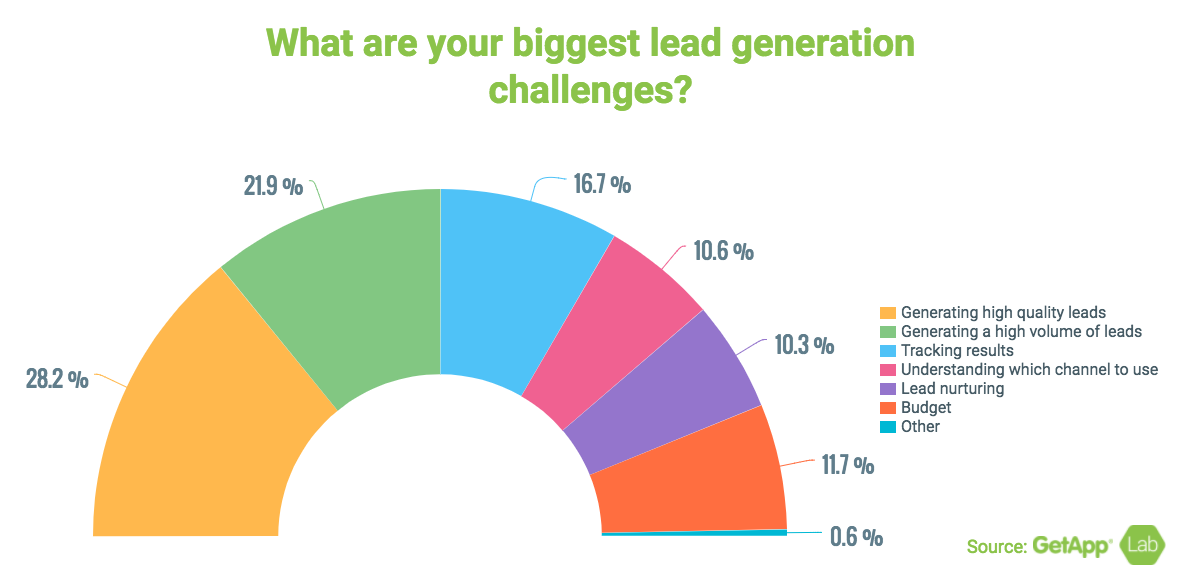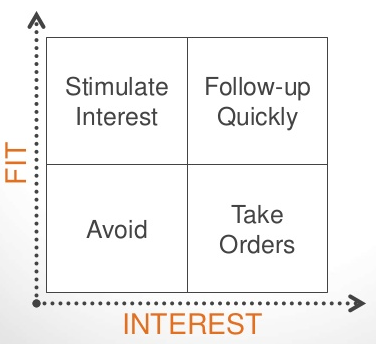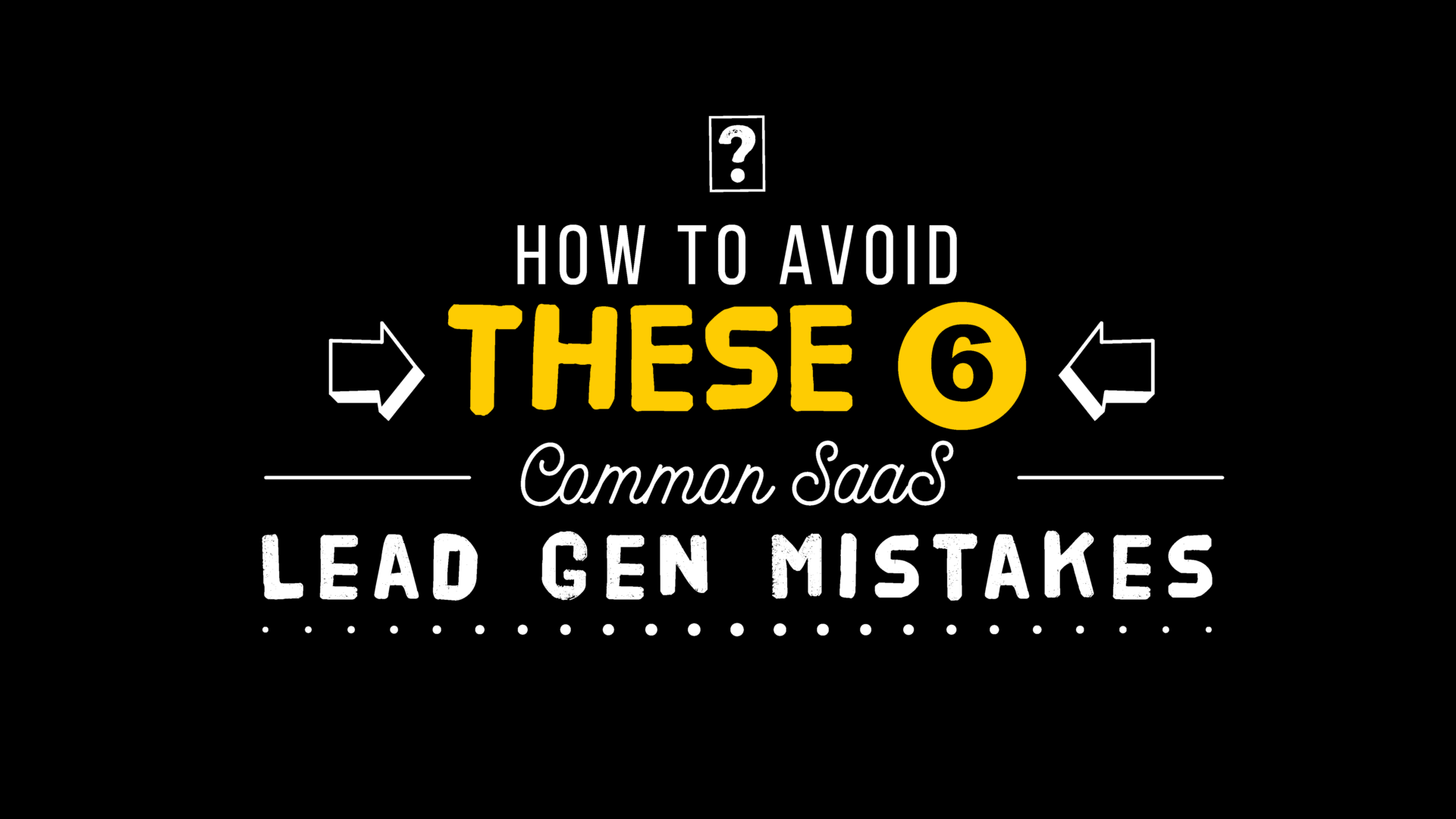Lead generation is the lifeline of your SaaS. Successfully generating leads and conversions is the precursor to sales, and ultimately, retention. Since SaaS companies have naturally recurring relationships as a result of monthly payments, it’s more important than in other businesses to attract leads that will turn into longtime customers. There are different strategies and tactics you can use for SaaS lead generation, but each comes with do’s and don’ts. Here are six lead generation mistakes to avoid.
6 SaaS Lead Generation Mistakes to Avoid
SaaS lead generation comes with many challenges and opportunities for improving your strategy, but what are the biggest hurdles?
A GetApp Lab study found that the most daunting lead generation challenge facing B2B marketers was generating high-quality leads, with just under 30% of the responses. Generating quality leads was even more of a problem than producing the number of leads. Around 21% of respondents chose that as their number one challenge.

Other SaaS lead generation hurdles include tracking results, understanding which channel to use, lead nurturing, and staying within budget. Not surprisingly then, you’ll see that the mistakes we want to avoid align with these challenges.
Working on Quantity over Quality
It may seem more obvious to work on bringing more and more leads into your sales funnel, but that could be a waste. Poor quality leads can waste time and resources. An incorrect match between lead and solution can leave a bad taste in the mouth of a potential buyer. That means that a low-quality lead that converts may be a higher churn risk in the future.
What is a “high quality” lead though? Well, that’s something you need to determine early. One way to make sure you target quality leads is by understanding your buyer personas. By understanding who your target customer is, how they describe their problem, and how they want to solve it can all influence your lead generation strategy.
It’s also important to bring sales and marketing together to establish a definition of what a sales qualified lead is for your SaaS. Doing so won’t only save you time and effort in the long run, but it can also act as a competitive advantage. Getting company-wide buy-in on the target leads puts you ahead of the pack since only 45% of companies have established a company-wide definition.

Your sales and marketing departments can work together to establish a definition by considering fit and interest. A higher “fit” means a particular lead is of a higher quality and most closely resembles a sales qualified lead. On the other hand, interest falls under the realm of the marketing department. By reaching an understanding of how to identify different types of leads and how to move forward with them, your lead generation strategy will become a well-oiled machine.
Ignoring SEO
Now that you’ve laid the groundwork for understanding and attracting high quality leads, you need to work on addressing the number of leads you receive.A grave mistake that SaaS companies can make when working on lead generation is to ignore SEO.
The SEO strategy you apply to your website and content is used to bring traffic to your website (which needs to have the essential elements to convert). Aside from setting up SEO basics on your site, you should find keywords that consider user intent, such as those that are used when someone wants to be informed vs. intends to make a purchase. These keywords should then be aligned with content along different stages of the buyer’s journey.
In general, aligning your SEO strategy with your inbound marketing strategy and user personas will significantly boost your SaaS lead generation efforts.
Looking at the Wrong Metrics
16.7% of B2B marketers struggle with tracking the results of their lead generation efforts. One mistake they may be making (that is causing them headaches) is that they are looking at the wrong metrics.
In order to track and analyze the metrics that are most important to your lead generation strategy, you need to come to a consensus on what a lead is. What that means is that your entire company needs to understand the goal, whether it’s capturing an email, increasing the number of downloads of a lead magnet, boosting the amount of trial or demo sign-ups, etc. The right metric or you are the ones that align with your end goal.
Other metrics to consider are looking at the return visits at the top of the funnel since this would indicate a warming relationship and the number of potential leads that are coming back for more. Keeping an eye on your lead to customer rate is a good way to measure the quality of leads and sales funnel process. As visitors move from lead to user, you need to pay attention to CLV.
Ignoring Customer Journey Phases
A huge mistake that SaaS companies commit during lead generation is ignoring the customer journey phases. Disregarding the challenges, thoughts, and questions that a potential user is facing can sabotage sales. Content needs to be relevant to a user to in order to drive a conversion. While this particularly applies to your content marketing strategy, all content across your entire site and landing pages need to be relevant to convert.
Taking an understanding of your user persona and buyer’s journey and transforming it into a lead magnet brings leads in, as well as identifies each lead with the content and pain points that catch their eye.
Lead magnets for the stages of a buyer’s journey could be:
- Early stages: checklists, templates
- Middle stages: email courses, whitepapers
- End stages: demo, trial
Only Trying One Channel
Understanding which channel to use to generate leads is a problem that around 10% of B2B marketers claim to be their biggest headache. A mistake they may be making is only trying one channel or aiming only ever to use one channel.
Content and offers should be promoted across different channels and mediums to find what connects to potential leads. What type of content works on which platform? Which channels are different types of leads/buyers at different stages using?
An inbound marketing strategy needs to be established since B2B marketers that use blogs receive 67% more leads. Additionally, 38% of B2B marketers say that social media brings in the largest volume of leads. This goes to show that there are different ways to bring leads in, so why limit yourself?
Making Conversion Difficult
Without realizing, you may be sabotaging your lead generation efforts. SaaS lead generation mistakes on your website that can be easy to make include:
- Landing pages that are too busy and confusing
- Having too many, not enough, or not prominent CTAs
- Inconsistent messaging
- Too many redirects or conversion points
- Too much information required to sign up for a free trial or demo
Again, your website should consider your user persona, stages of the SaaS buyer’s journey, your definition of a quality lead, and the metrics you want to measure. All of this also needs to happen in a clean and organized way that makes user action easy and enticing.
Final Thoughts on These SaaS Lead Generation Mistakes
At the heart of all lead generation is the customer, and your ability to provide value and solve their issues. Forrester stated in their B2B Marketing Playbook for 2018 that “the next wave of competitive advantage will be from taking swift action based on deepening customer knowledge and delivering what their customers want before their competitors do.” This means that in all aspects of your lead generation strategy you need to become an “architect of customer engagement.” Now more than ever you need a firm grasp on who your customer is and what they need.

